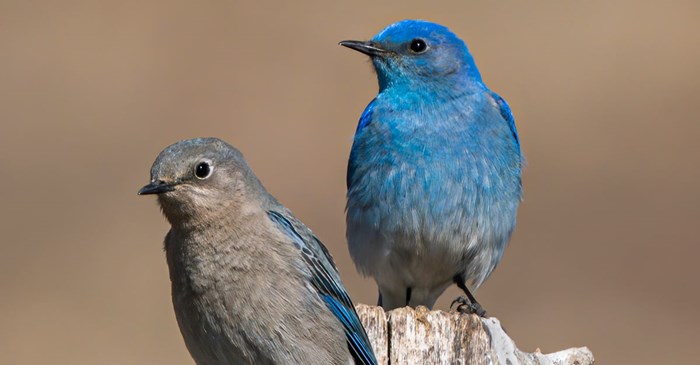When it comes to most backyard bird species, male birds take the stage with their bright and colorful plumage. In the bird world, it is most often the case that the male counterpart of the species is more colorful and striking than the female. Because of this, many female birds are not given the same attention as male birds, especially when it comes to identification and photography. But, there is good reason for the dull and often colorless feathers of female birds.
The Bird Coloration Conversation
Underlying the coloration of male and female birds within each unique species are many complicated scientific theories and concepts. Barring an ornithology deep dive, here’s a quick and simplified rundown of what science has to say about why male birds are often more colorful than their female counterparts:
Female birds prefer a colorful mate.
During the mating season, males attract females by showing off their vibrant feathers. Many experiments have shown that when this occurs, female birds are more likely to choose a mate with brightly colored plumage.
Colorful feathers signal a strong bird.
According to some studies, female birds don’t just prefer colorful feathers, but they also use them as a way to determine a potential counterpart’s health and vitality… and there is actually some science to back this up.
For some bird species, a healthy diet has a direct correlation to colorful plumage in male birds. For other species, plumage coloration is determined by the bird itself, but even this could still be a determinant of the bird’s health.
Color is a means of competition among males.
Not only is colorful plumage a way for male birds to compete for mates, it is also a way for males to compete for territory. In the battle for territory amongst birds, males can show off their flashy feathers to signal that they have occupancy over a certain area.
Color differentiates species.
Just as we use the bright colors of birds to identify different species, so do birds themselves. The colorful plumage of males allows birds within the species to recognize each other. It also allows predators outside the species to recognize birds that are not safe to eat.
Dull feathers protect female birds.
Probably one of the most widely accepted reasons for the dull feathers of many female birds is that they need to be camouflaged in order to avoid a predator attack while nesting. If females that nest in the open were brightly colored, both they themselves and their nesting flock would be incredibly vulnerable to predators.
These theories and concepts have changed over time and continue to change as more studies are done to understand bird coloration. Nevertheless, they help to understand just why bright and fancy feathers so seldom appear in a female bird’s plumage.
If you’d like to see birds of all colors in your backyard, fill your feeder with any of Lyric’s Wild Bird Food Products. They are proven to attract the widest variety of birds with the highest quality ingredients.
By Darby Seymour, Marketing Intern and Garden Writer
